Sap-Sap – Transcript
– Announcer: This week on Wisconsin Foodie:
[bluesy guitar music]
– Alex Hanesakda: We’re at Viet Hoa right now, a northside Asian grocery store. We’re doing some shopping for next Saturday’s dinner. The lemongrass right here is gonna be for our sien savanh, which is our Laotian-style jerky. Ever have a Laotian-style rib?
– Luke: I don’t think I have.
– It’s so weird seeing people eat sticky rice with a fork. Treat it like bread.
– Mm-hmm.
– Alex: You wouldn’t eat bread with a fork.
– Luke: It’s the intersection between the fine dining culture and really traditional ethnic food culture, where sometimes people just don’t get it. I think it’s actually a testament to you as the chef that you are pushing people into that realm.
– Thank you guys so much for coming out. It’s a complete honor to have my mom here. The reason why we’re here right now, to share our culture with you guys.
– Announcer: Wisconsin Foodie would like to thank the following underwriters.
– Introducing Organic Valley Ultra. Milk with more protein, half the sugar, and no toxic pesticides. Let’s be honest, none of that healthy stuff really matters unless our kids will drink it.
[dramatic music, mom whispers “C’mon”]
[girl gulping]
[cow mooing]
– Yeah, I would drink that.
[mom gasps]
– Did you hear that? She would drink that!
[cheering, triumphant music]
– Parents are weird.
– More protein, half the sugar. Organic Valley Ultra.
– The dairy farmers of Wisconsin are proud to underwrite Wisconsin Foodie, and remind you that in Wisconsin, we dream in cheese.
[crowd cheering]
Just look for our badge. It’s on everything we make.
Employee-owned New Glarus Brewing Company has been brewing and bottling beer for their friends, only in Wisconsin, since 1993. Just a short drive from Madison, come visit Swissconsin and see where your beer’s made.
– Wisconsin’s great outdoors has something for everyone. Come for the adventure, stay for the memories. Go wild in Wisconsin. To build your adventure, visit dnr.wi.gov.
– From production to processing, right down to our plates, there are over 15,000 employers in Wisconsin with career opportunities to fulfill your dreams and feed the world. Hungry for more? Shape your career with these companies and others at fabwisconsin.com.
– Specialty crop craft beverages use fruit grown on Wisconsin orchards and vineyards to create award-winning ciders and wines. Wisconsin’s cold climate creates characteristics and complexities that make this craft beverage unique to our state.
– Society Insurance.
Freshwater Family Farms.
Also, with the support of the Friends of PBS Wisconsin.
[upbeat music]
– Luke: We are a collection of the finest farmers, food producers, and chefs on the planet.
We are a merging of cultures and ideas, shaped by this land.
We are a gathering of the waters, and together, we shape a new identity to carry us into the future.
[upbeat music]
We are storytellers. We are Wisconsin Foodie.
[paper tearing]
[downtempo hip-hop music]
– Alex: We’re at Viet Hoa right now, a northside Asian grocery store, and we’re doing some shopping for next Saturday’s dinner. The lemongrass right here is gonna be for our sien savanh, which is our Laotian-style jerky, kind of our fan favorite. We blend it up with garlic and make that our marinade.
And what else? Papaya, yeah.
Green papaya, it’s like the quintessential Southeast Asian salad.
Really spicy. It really holds no flavor. It takes the flavor of the sauce you make for it. So the sauce we’re making for this will be a tamarind palm sugar dressing. This is kind of pounded in a mortar and pestle. Some chilies, garlic, and obviously sticky rice. It wouldn’t be a Laotian dinner without sticky rice. So we’ve got the bulk of our stuff here.
Thank you.
– Cashier: You’re welcome.
– Come to our dinner.
[chuckles]
[bluesy guitar music]
We’re making beef jerky today. In Lao, we call it sien savanh, which literally means “jerky of the gods.” I learned this recipe from watching my parents do it. Right here we’ve got [speaking Lao].
This is kind of like a slurry of fresh lemongrass, fresh garlic, that’s it. A little water, sesame seeds, our own dry cure mix that we make. And this is our wet mix that we all incorporate into one bowl, and that goes into our jerky. This is what I do.
Put that with some sesame seeds.
This is actually like everyone’s favorite at our dinners.
They’re like, “I want more of that jerky.” And it’s like, jerky’s not that cheap, you know?
[chuckles]
And we’ll just get a little of this mix.
My family came here in 1982. It was after the Secret War in Laos. It’s kind of a crazy story. My mom and dad escaped from Laos to Thailand after the bombs were being dropped. My mom was actually pregnant with me, and I was actually born in Thailand in the Ubon refugee camp.
And shortly after, that’s when we got sponsored by a church and located in Burlington, Wisconsin. You know, I could only imagine how hard it was for my parents to assimilate to a new climate, to a new language. Our communication with our neighbors was food. It’s weird, people think egg rolls are a traditional Laotian or Thai thing. But I think it’s like a really Americanized thing, and my mom knew people liked that, so she would make egg rolls on a whim, and she started giving them to the neighbors, and the neighbors loved them, and that was her side hustle. In the very beginning, she was my biggest critic, for sure, but as soon as I started getting publicity and selling out on these dinners, “They’re really eating our food?” I’m like, “Yeah, Mom, they actually like it.” But she enjoys it.
The foundation of all these recipes are hers, but with my own little tweak.
So we’ll let this sit for two days.
You essentially just stick it in the dehydrator, and I bag it up, and right before I serve it, we give it a really quick flash fry,
and that fry, what that does is caramelizes
the whole marinade, so it makes all the flavors pop, the lemongrass, the garlic, the peppercorns,
and the oils from the sesame seeds.
From my experience doing this for the past two years, it’s kind of weird how we keep selling out, and I think people are drawn to the fact that we do it really authentic and traditional. I mean, it’s kind of more than the food. It’s the story, what happened in Laos, so we kind of give them a little bit of history and kind of more of an authentic, intimate dining experience than your normal restaurant would.
– Luke: Today, we’re headed to Racine, Wisconsin for SapSap, a pop-up Laotian barbecue put on once a year by Chef Alex Hanesakda. Traditional Lao cuisine is rich with history and tradition, and it fits well with the host space of The Branch at 1501, a repurposed bank in downtown Racine.
– You ever have Laotian-style ribs?
– I don’t think I have.
– It’s so simple, dude.
[laughing]
‘Cause we like a little chew to it, actually.
– Yeah.
– They don’t have to be fall-off-the-bone tender, but it’s all about the marinade.
– Luke: Fish sauce in the marinade?
– A little bit, yep.
– Okay.
– Fish sauce–
– Lime juice?
– No lime, fish sauce.
– Okay.
– Alex: Some lemongrass, garlic, soy.
– Luke: Mm-hmm.
– Alex: And what we do is actually mushroom powder. We found this really good mushroom powder that goes really well with the marinade.
– Luke: Is it cool if I taste it?
– Alex: Yeah, go ahead. Absolutely.
– Awesome. Look at that.
– Alex: So you’re gonna taste a little sweet, a little umami, salty.
– That’s delicious.
– Thanks. Yeah, again dude, that mushroom powder goes so far.
– Mm-hmm.
– It’s ridiculous.
– I hit the black pepper, there’s–
– Yep, there’s some black pepper in there.
– Yep. It’s got a really nice finish, really sweet. It’s really moist too, which is delicious.
– Hopefully, it stays that way for the dinner.
– Yeah, right? That’s always the trick with ribs, man. Not a lot of fat in there.
– Yeah.
– Where do you source this?
– We go through Pritzlaff Meats in New Berlin. That’s pretty much where we get all our proteins from. It’s something local, obviously. My parents were like the epitome of literally farm to table.
I mean, our neighbor, he had a farm, and he’d literally kill the cow there, they’d bring it out on a forklift, put it in our backyard, and my dad would call his friends, his family, and they’d just come here butchering it. Seeing that process growing up, I’m like, “None of my friends are doing that. “That’s so weird, Dad!” You know what I mean?
But as I’ve gotten older, to understand where our food comes from and how much it tastes better freshly killed, I guess inspires us to do these dinners where we source locally and try to get the best product as possible.
– Luke: Yeah, it’s the right way.
– Yeah.
– Luke: It really is.
– Alex: A lot of people that come to our dinners come for our grilled proteins, you know?
– Yeah.
– ‘Cause it’s familiar to them.
– Mm-hmm.
– Everyone. But we just do our own little twist on it.
All right, Luke, try this.
– Luke: So this is deep-fried jerky?
– Alex: Pretty much.
– Luke: Pretty much.
[chuckling]
– We dehydrate it.
– Yeah.
– We get it down to the water level we want it, and we just flash fry it, ’cause what that does is kind of like makes all the flavors pop, the marinade.
– Wow. That’s really intricate and complex.
– Yeah, it’s a unique technique, isn’t it?
– Yeah. And that’s specifically Laotian?
– Yeah.
– Okay.
– It’s call sin sivanh.
– Wow. Sin sivanh, okay.
– Which means “jerky of the gods,” essentially.
– And I know why. So what you normally think of as jerky being kind of almost laborious to eat, ’cause you chew it, and you chew it, and it’s really flavorful, but in this instance, it’s literally exploding with flavor in my mouth.
– Alex: This goes really good with sticky rice. But it’s so weird seeing people eat sticky rice with a fork, you know? I keep saying, “Treat it like bread.” You wouldn’t eat bread with a fork.
– Luke: It’s kind of that intersection between the fine dining culture–
– Alex: Yeah.
– Luke: And really traditional ethnic food culture where sometimes people just don’t get it. I think it’s actually a testament to you as the chef that you are pushing people into that realm.
– Alex: We try, but there’s no right or wrong way to eat anything, so if they wanna eat sticky rice with a fork, go ahead.
[Alex chuckles]
– Yeah.
– So, Luke, you gotta try this. It’s a all-purpose dip that we use our meats in. You can even take sticky rice and dip it in there.
– Luke: Oh man, that’s sexy.
– Alex: Make a little ball.
It’s got some heat, so be careful.
– Okay. Here we go. Wow. I’ve had a lot of really warm food, but the thing that’s so different and distinct about this is the linger.
– It lingers, for sure.
– Man, my tongue is a little bit numb right now, almost like the Szechuan peppercorn, because this has just got, it’s just packed in there.
– We have a saying, [speaking Lao], which means, “If it’s not spicy, it’s not good.” People are always like, “Why do you guys eat so spicy?” And it’s hard to describe, ’cause if you eat spicy food your whole life, you kind of just need that sweating–
– Yeah.
– to actually feel like your meal’s complete. Whenever I had friends over, whenever my parents had friends over, there would always be these dips laid out. They’re essentially our salsa. This could be a salsa roja, you know what I’m saying?
– Sure, sure.
– What we do, what we’re gonna do tonight with the barbecue, we’re just gonna slice up a bunch of proteins and dip it in these sauces.
– All right, so we tasted this jeow earlier, and I wanna taste it now with the beef. I’m kind of expecting all the richness of the sauce and the richness of the beef to kind of collide together in this huge flavor explosion.
And it does.
[bluesy guitar music]
You know it’s good when it’s hot, like lingering hot, but you can’t stop going back for it because it’s that good. I love it.
[bluesy guitar music]
– All right, Luke, try this. This is fresh tamarind fish sauce that goes into our papaya salad.
– Sure.
– So a little sweet, a little tart, a little sour.
– Yeah.
– We actually soak the tamarind and squeeze it ourselves.
– But it’s crazy labor-intensive, isn’t it?
– It is.
[both laughing]
Every dish practically is fairly labor-intensive.
– Yeah. This is not a cuisine of shortcuts by any means.
– That’s for sure. I mean, look what she’s doing, old school.
– Luke: Right? We got a mortar and pestle out over here. What else is in the green papaya salad?
– Alex: Papaya, obviously, but we like to use eggplants, carrots, long beans. Look how pretty these look. So this is actually a really, they’re like a lavender color.
– Luke: Yeah, those are beautiful.
– Usually, you know, you get them in green, so when I saw these, I was like, “I gotta have these.”
– Sure.
– And my mom almost had a heart attack, ’cause she doesn’t see these often, you know?
– Being that we’re not in a traditional restaurant right now, this is like a pop-up that you do in Racine. Why Racine?
– Well, we live in Sturtevant, so we kind of like were searching for venues in the area. I mean, a lot of people moved places thinking it was the new hotspot or whatnot, but we kind of just wanted to build our foods in the city since we live here too.
– Is it your goal to make really traditional Laotian food?
– Growing up as a kid, we grew up making traditional food. I don’t deviate away from the traditional cooking, but if I feel like I need to add something that is not traditional, I’ll do it. Like our sausage, some might say it’s not traditional, ’cause it doesn’t have big chunks of pork fat or whatnot in it, but I try to stay traditional sometimes, but I don’t feel bad if I don’t.
[chuckles]
– Right, right.
I’m grabbing a bite of this green papaya salad. You can kind of see it here. It’s all macerated together. It’s green papaya, carrot, cucumber, the long beans, chilies, fish sauce, sugar. It’s got a lot going on here. Let’s give it a shot.
It’s so crunchy. It’s so fresh.
It’s almost the perfect counterpoint for all the meats, and the chilies, and the sticky rice that’s going out tonight for this meal. This is like the crunchy foil that ties it all together. That’s legit.
[bluesy guitar music]
– Alex: Have you ever had Lao-style sausage, Luke?
– Luke: I don’t know that I’ve ever had Lao-style. I think the thing that I’m becoming more aware of today is I’ve had a lot of Hmong cuisine–
– Okay.
– But I can’t say that I’ve ever had specifically Lao. What would be the differences?
– Alex: I know they use a lot of the same herbs.
– Luke: Mm-hmm.
– One thing I do notice a difference though, that is pretty unique to Lao culture and cuisine is dill. But I know they add ginger. We don’t touch ginger in our sausage. The only thing that I can think off the top of the head is we use ginger in soups. We use a lot more galangal than we do ginger. Also, common ingredients in Lao cuisine, kaffir lime, lemongrass. So that’s what’s in these sausages.
– Is there any difference in the cooking style? Obviously this fire’s really, really hot right now. You know, cooking a traditional bratwurst, you go really low.
– We actually go low.
– Okay.
– We’re just trying to get this done. You wanna get as much smoke as possible with that fat dripping down. Even sometimes when the coals are dead, you just keep it on there for a little bit, ’cause you want that smoke from the fat dripping down to add another flavor to it.
– Luke: This is one of the products so that people, can they find these?
– Right now, we’re in the process of R&Ding with, actually, Usinger’s right now, but we were selling these at two local spots in Racine, Milwaukee. A few chefs were carrying this too. I know Dave from Natt Spil was carrying these, Tory Miller was carrying these for a while.
– I definitely, I am really, really looking forward to this.
[staff chattering]
So the sausages are inside now, and I can’t wait. I have to try it.
It’s excellent. That was definitely worth sneaking a peek.
[playful woodwind music]
– All right, Luke, I’d like you to meet my mother. Mom, this is Luke from Wisconsin Foodie.
– Hi.
– She literally is the reason–
– Nice to meet you.
– why we’re doing this. Watching her in the kitchen, as a kid, and her still yelling at me that I’m doing things wrong.
[Luke laughing]
– It’s crazy the technique I’m learning from her.
– Is it okay if I put some gloves on and help you out?
– Yep.
– Excellent. What are we doing?
– Just put three of these in the bowl.
– Three of each rice? Okay, got it.
– Yeah.
– So I came in at just the right time. So three? I’ll take it from this basket.
– Yes.
– One, two, three. Do we have more bowls, or did you literally save the last two for me?
[both laughing]
My timing, as usual, is impeccable.
[chuckling]
All right. So you have a curry that’s going with this, right? A coconut curry.
– Yes, yes.
– Can I taste it?
– Right there.
– Is it right over here?
– In the bowl there.
– Okay. Is that sugar, or is it peanut?
– Anusone Chantharat: It’s roasted peanuts, crushed into a curry.
– Luke: Nice.
– Anusone: With coconut milk, kaffir lime, and then you stir it up.
– For people who don’t know what kaffir lime actually tastes like, I would strongly suggest finding some in an Asian market. The closest thing that I tell young chefs that it tastes to is, have you ever had Fruity Pebbles? The cereal?
– Yeah, yeah.
– Right?
[playful woodwind music]
Curry’s one of the most aromatic dishes that you can even conjure, with all the lemongrass, I smell ginger, I smell coconut, the pork. There’s definitely citrus elements in there.
It’s got all sorts of different flavors going on. You get the sweet, you get the salty, you get little hints of the citrus and acid, you get the richness of the peanut and the pork, and the fat, that really is where the flavor lives.
I actually am done with the spoon.
That is ridiculously good.
How do you feel about the food that Alex is cooking? Are you excited about it? It’s kind of like a–
– Yeah, I’m exciting about it.
– Luke: Right? It’s a love letter to you.
[gentle Laotian music]
[crowd chattering]
[crowd applauding]
– If I can get everyone’s attention please, up here. Thank you guys so much for coming out. This is our third year, and our biggest year yet.
You know I’m a big momma’s boy, so it’s a complete honor to have my mom here–
[crowd cheering]
sharing her food.
[crowd applauding]
Again, guys, this means so much to me to have you guys here. And we have Luk Lao Laan Lao here. That is a Laotian nonprofit that specializes in arts and dance, you know, promoting Laotian culture, Lao cuisine. I hope this food here can kind of introduce you what happened in Laos, the reason why Noy’s here, my mom, the reason why we’re here right now to share our culture with you guys.
[crowd applauding]
Thank you.
[gentle Laotian music]
[guests chattering]
[gentle Laotian music]
– Luke: An important part of executing an event like this is creating the illusion that everything is under control and calm.
– Alex: Let’s get soup out of the way.
– Man: But you can stick to the order.
– Luke: In reality, the back of the house is like an all-hands-on-deck scramble to make sure that the food is plated, garnished, and served without missing a beat.
– Alex: How many plates of meat?
– Man: Nine all day.
– Alex: Okay, hold on, hold on.
– Woman: That one’s gonna go downstairs.
[gentle Laotian music]
– Alex: This’ll solve a lot of issues, ’cause he can tell us that–
– Woman: Do we need this upstairs?
– Just one person talking. Nine downstairs?
– Yeah, yeah, yeah.
– Alex: Awesome job, guys. Let’s keep it up.
– Woman: These going upstairs?
– What do you think, Luke?
– What’s that?
– What do you think, dude?
– What do I think? I think that this feels like just about every catering event that I’ve ever been on in my entire life. There’s always chaos, but that’s why you do it. Kitchen life, baby.
– Woman: Is this going downstairs?
[upbeat jazzy music]
[guests chattering]
– That’s what’s on there, right there.
– Alex: Hey, is that cutting board done?
– Luke: Yeah, it’s pushing medium, medium well. So this is my favorite part. Honestly.
– Yeah.
– I know that it’s so chaotic, but–
– You like that rush, yep.
– Yeah, right?
– It gets nerve-wracking.
– Yeah.
– To say the least.
– That being said, I know that tonight, all the tips, the tips go to a good cause.
– Yeah.
– What’s the cause?
– There was a pretty bad flood in Laos that recently just happened. A bunch of that money goes towards the flood victims, and when I got a little choked up on my speech, I was just kind of thinking about all that and the sacrifices that my mom went through to get here, and here we are now, eating her food, you know?
– Luke: Yep. I think that’s what makes your food so good though, man. It comes straight from your heart.
– Alex: It’s soul food, dude.
– Luke: Right?
– Alex: As clich as it sounds, it’s soul food.
– Luke: It is, and I think that that’s what creates an authentic experience for your diners, I think that’s what creates an authentic meal for even people like me to come in and snack on it, dude.
– Alex: Absolutely.
– Luke: It’s awesome to be a part of it. This food is all heart. I mean, watching the whole production today, watching members of your family come in.
– Alex: Yeah.
– To be a part of it, to create community, and this food is a testament to that. It is delicious, it’s authentic, and it’s so beautifully Wisconsin. It’s an honor to meet you, and, dude–
– Thank you so much.
– If you ever need help again,
– Yeah, thank you for coming.
– It’d be my honor. I feel like I walked away learning a lot.
– Alex: Well, you guys helped us promote Laotian culture, Lao food, and thank you guys so much.
– Luke: You’re welcome.
– Alex: It means the world.
[upbeat jazzy music]
– How do you feel about the food that Alex is cooking? Are you excited about it? It’s kind of like a–
– Yeah, I’m exciting about it.
– Right? It’s a love letter to you.
[Satcha laughing]
He’s telling your story through food and ingredients, and it’s beautiful. That is ridiculously good.
[Luke choking]
Remember that one time–
– It takes your breath away.
– Yeah, I choked on camera? That was funny.
[chuckles]
This is delicious. Thank you.
– Announcer: Wisconsin Foodie would like to thank the following underwriters.
– Introducing Organic Valley Ultra. Milk with more protein, half the sugar, and no toxic pesticides. Let’s be honest, none of that healthy stuff really matters unless our kids will drink it.
[dramatic music, mom whispers “C’mon”]
[girl gulping]
[cow mooing]
– Yeah, I would drink that.
– Do you hear that? She would drink that!
[cheering, triumphant music]
– Parents are weird.
– More protein, half the sugar. Organic Valley Ultra.
– The dairy farmers of Wisconsin are proud to underwrite Wisconsin Foodie, and remind you that in Wisconsin, we dream in cheese.
[crowd cheering]
Just look for our badge. It’s on everything we make.
Employee-owned New Glarus Brewing Company has been brewing and bottling beer for their friends, only in Wisconsin, since 1993. Just a short drive from Madison, come visit Swissconsin and see where your beer’s made.
– Wisconsin’s great outdoors has something for everyone. Come for the adventure, stay for the memories. Go wild in Wisconsin. To build your adventure, visit dnr.wi.gov.
– From production to processing, right down to our plates, there are over 15,000 employers in Wisconsin with career opportunities to fulfill your dreams and feed the world. Hungry for more? Shape your career with these companies and others at fabwisconsin.com.
– Specialty crop craft beverages use fruit grown on Wisconsin orchards and vineyards to create award-winning ciders and wines. Wisconsin’s cold climate creates characteristics and complexities that make this craft beverage unique to our state.
– Society Insurance.
Freshwater Family Farms.
- Henry & Sons Bourbon.
Something Special from Wisconsin.
Marcus Hotels & Resorts.
Central Wisconsin Craft Collective.
91.7 WMSE.
Edible Milwaukee magazine.
Also, with the support of the Friends of PBS Wisconsin.
– For more information about upcoming Wisconsin Foodie special events and dinners, please go to wisconsinfoodie.com.
Still hungry for more? Get connected on Facebook and Instagram, and also make sure to subscribe to our YouTube channel, where you’ll find past episodes and special segments.
[gentle acoustic music]
Search Episodes
Related Stories from PBS Wisconsin's Blog

Donate to sign up. Activate and sign in to Passport. It's that easy to help PBS Wisconsin serve your community through media that educates, inspires, and entertains.
Make your membership gift today
Only for new users: Activate Passport using your code or email address
Already a member?
Look up my account
Need some help? Go to FAQ or visit PBS Passport Help
Need help accessing PBS Wisconsin anywhere?

Online Access | Platform & Device Access | Cable or Satellite Access | Over-The-Air Access
Visit Access Guide
Need help accessing PBS Wisconsin anywhere?

Visit Our
Live TV Access Guide
Online AccessPlatform & Device Access
Cable or Satellite Access
Over-The-Air Access
Visit Access Guide
 Passport
Passport






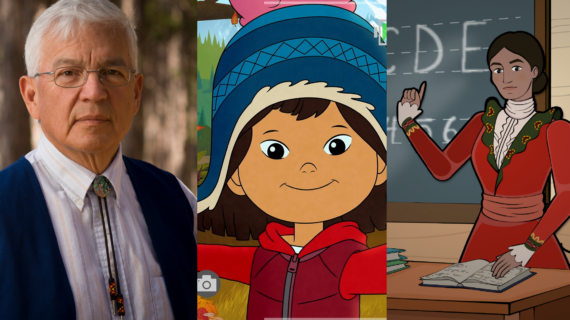

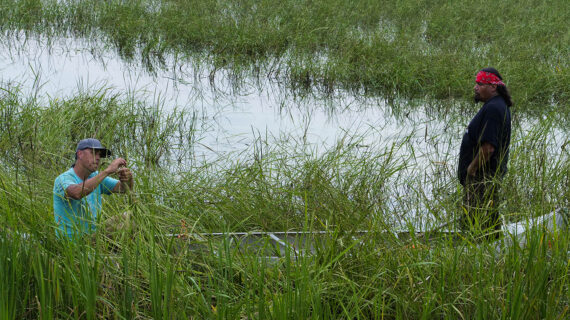
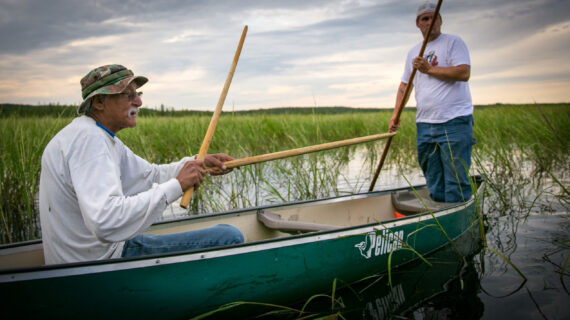

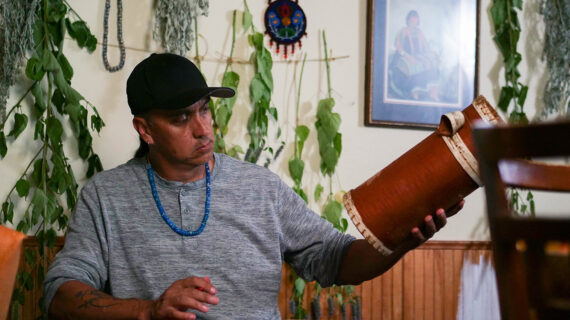

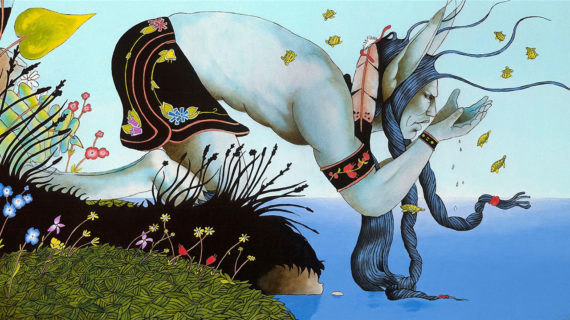


Follow Us